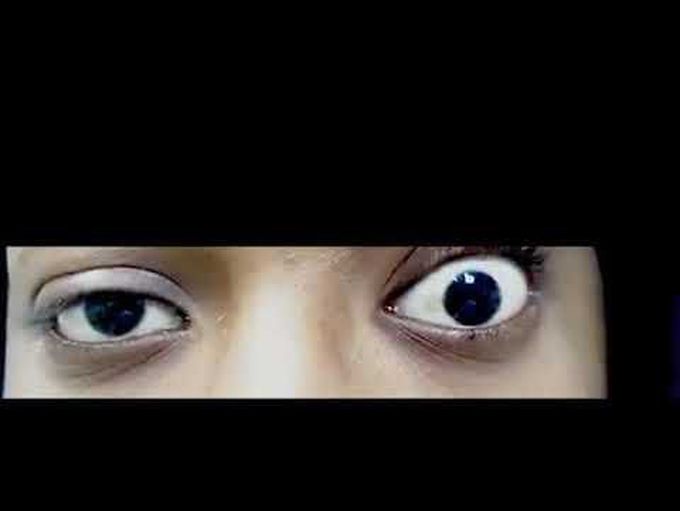


Ptosis of an Eyelid Induced by Manual Elevation of the Other Eyelid
Unmasking Ptosis in Both Eyes A 27-year-old woman presented to a tertiary care center with a 1-month history of a drooping left eyelid that worsened in the afternoon. She reported no other neurologic symptoms, such as diplopia, weakness, numbness, fatigability of limbs, or disturbed speech or swallowing. Her pupils were equal, round, and reactive to light and accommodation. She had prominent ptosis of the left eyelid (Panel A), which worsened with sustained upward gaze. The right eyelid appeared to be unaffected; however, manual elevation of the left eyelid induced ptosis of the right eyelid (Panel B; see video). Laboratory evaluation revealed an acetylcholine-receptor–antibody level of 4.56 nmol per liter (normal value, <0.05 nmol per liter), a finding consistent with a diagnosis of myasthenia gravis. There is approximately equal innervation of the levator palpebrae superioris muscles in both eyelids. In the context of asymmetric ptosis, increased motor impulses to compensate for ptosis on the more affected side flow to both eyelids, which can be sufficient to mask mild ptosis on the less affected side. With manual elevation of the affected eyelid, the need to sustain eyelid elevation is relieved, and these motor impulses are attenuated, which unmasks ptosis of the other eyelid. This patient had myasthenia gravis, but this phenomenon can occur in persons who have ptosis affecting the eyes asymmetrically that is due to any peripheral cause. The patient was treated with pyridostigmine and prednisolone, which resulted in rapid amelioration of the ptosis, and she has remained well during 2 years of follow-up.

